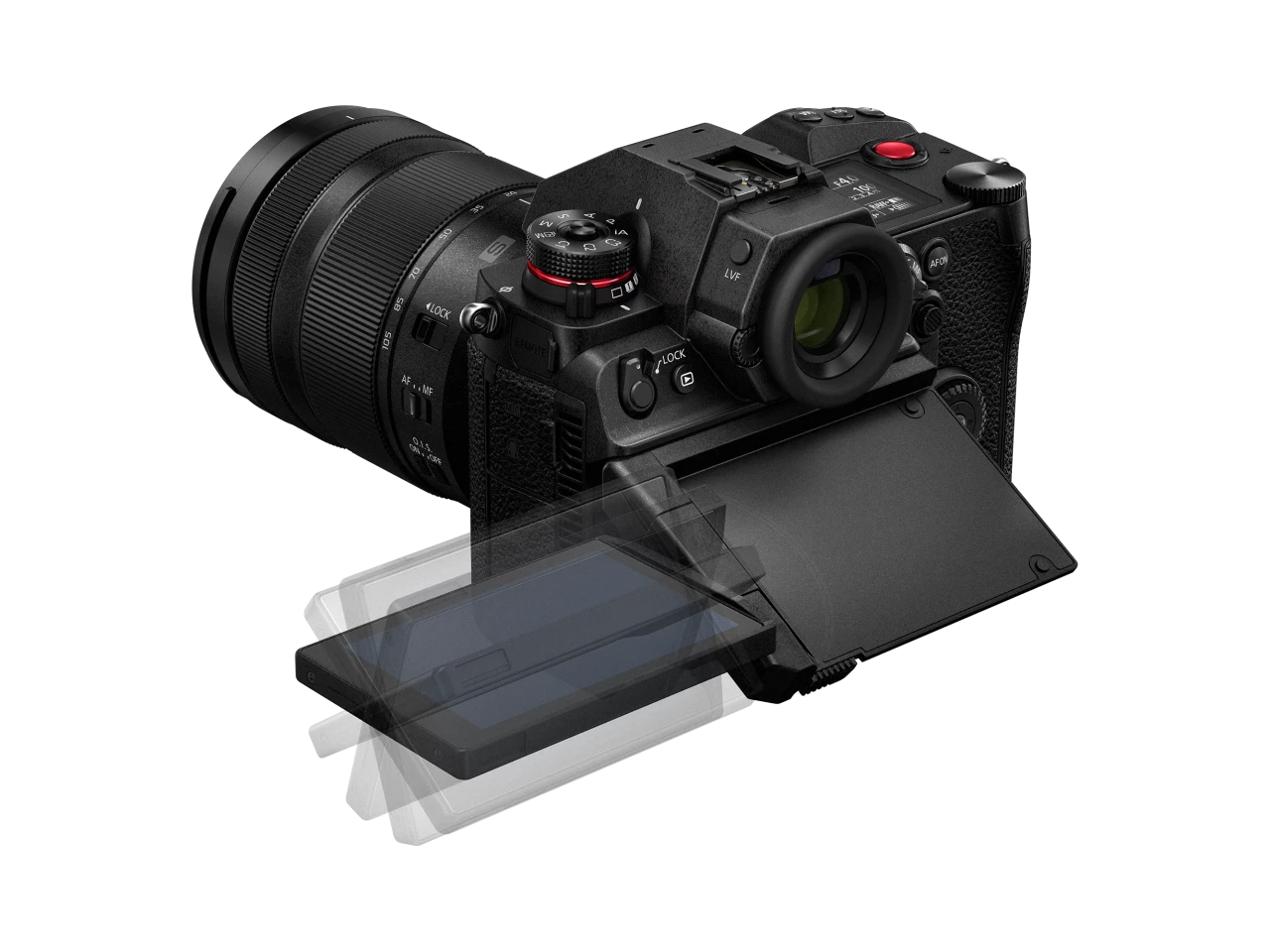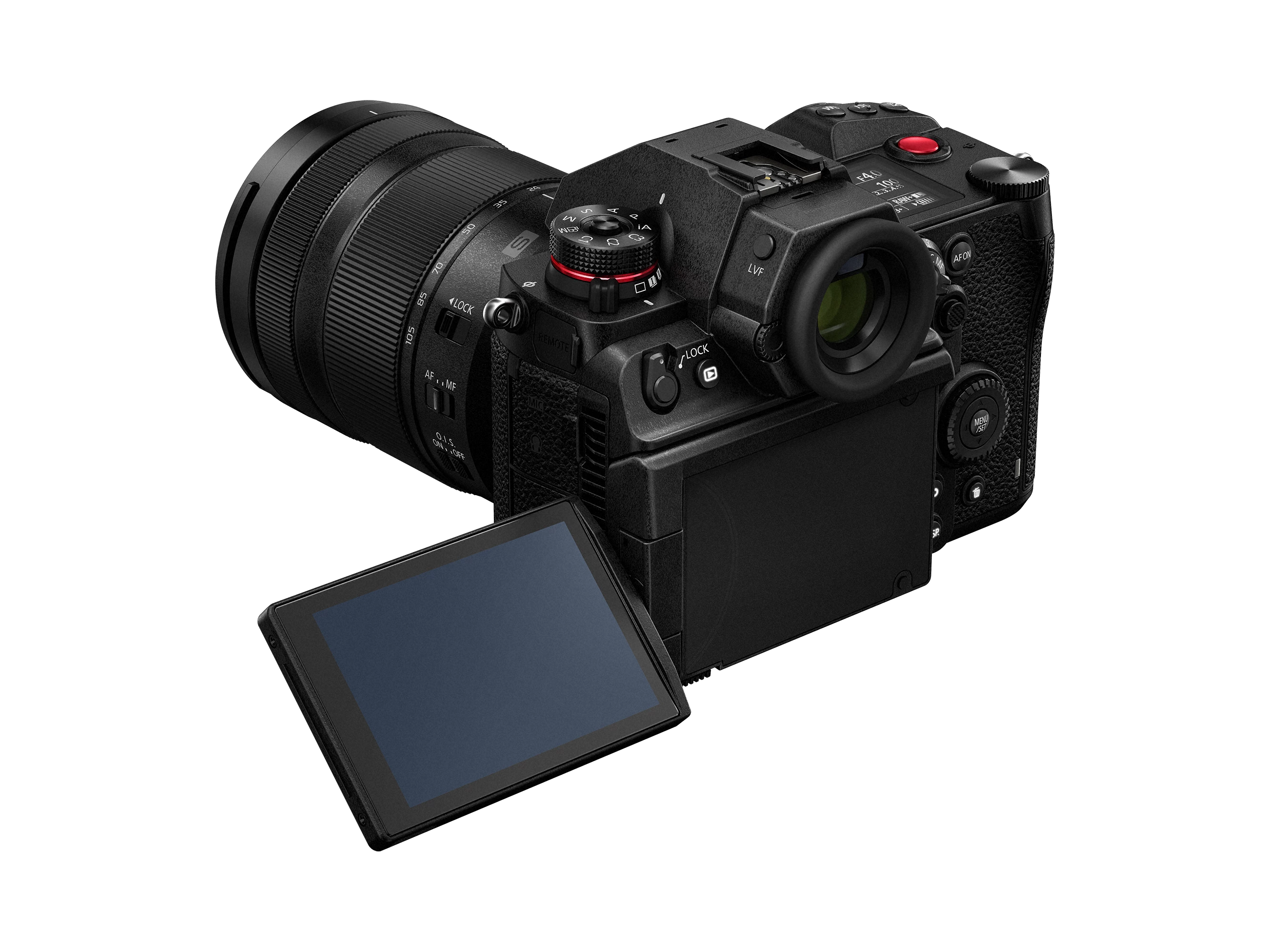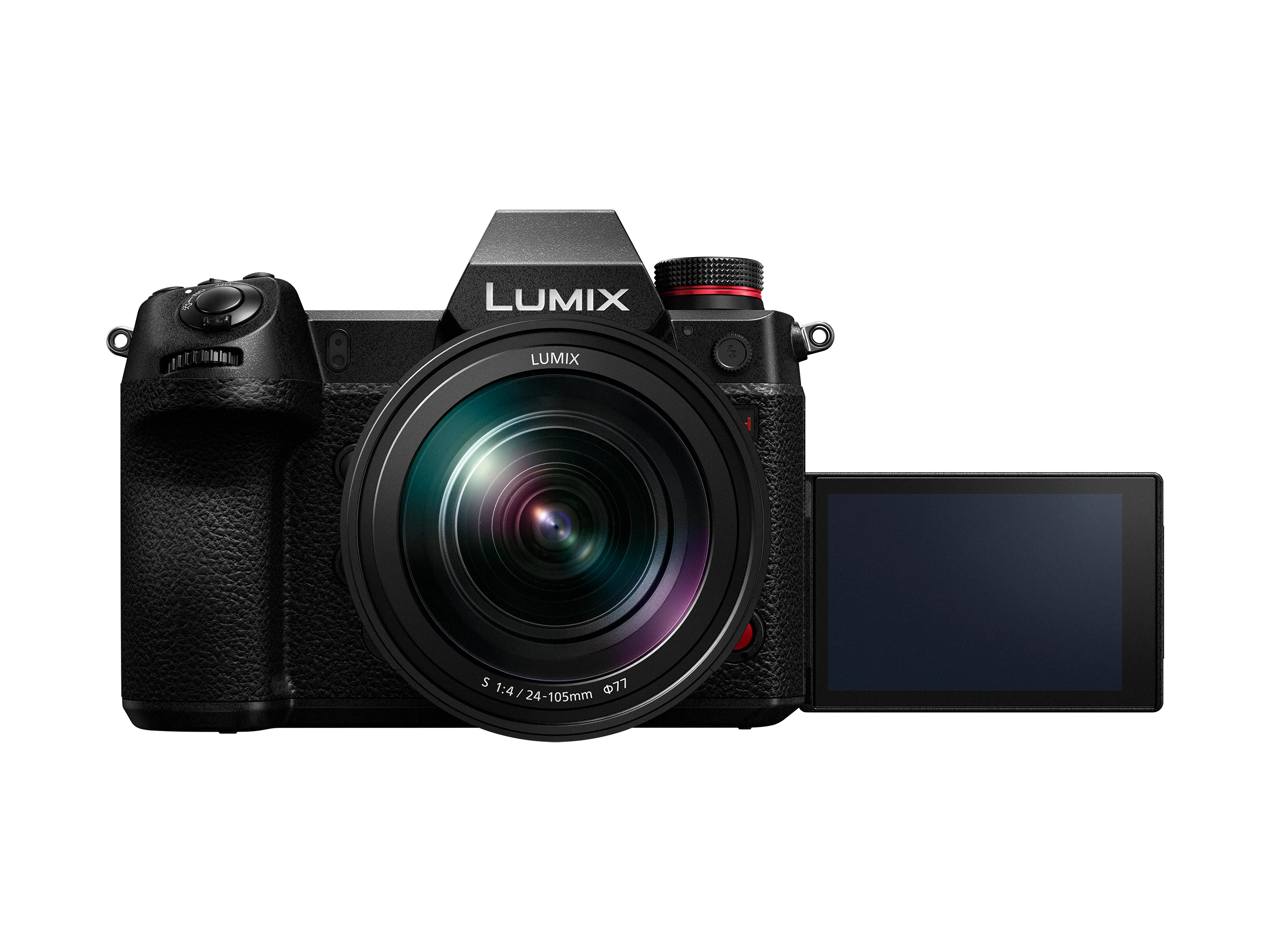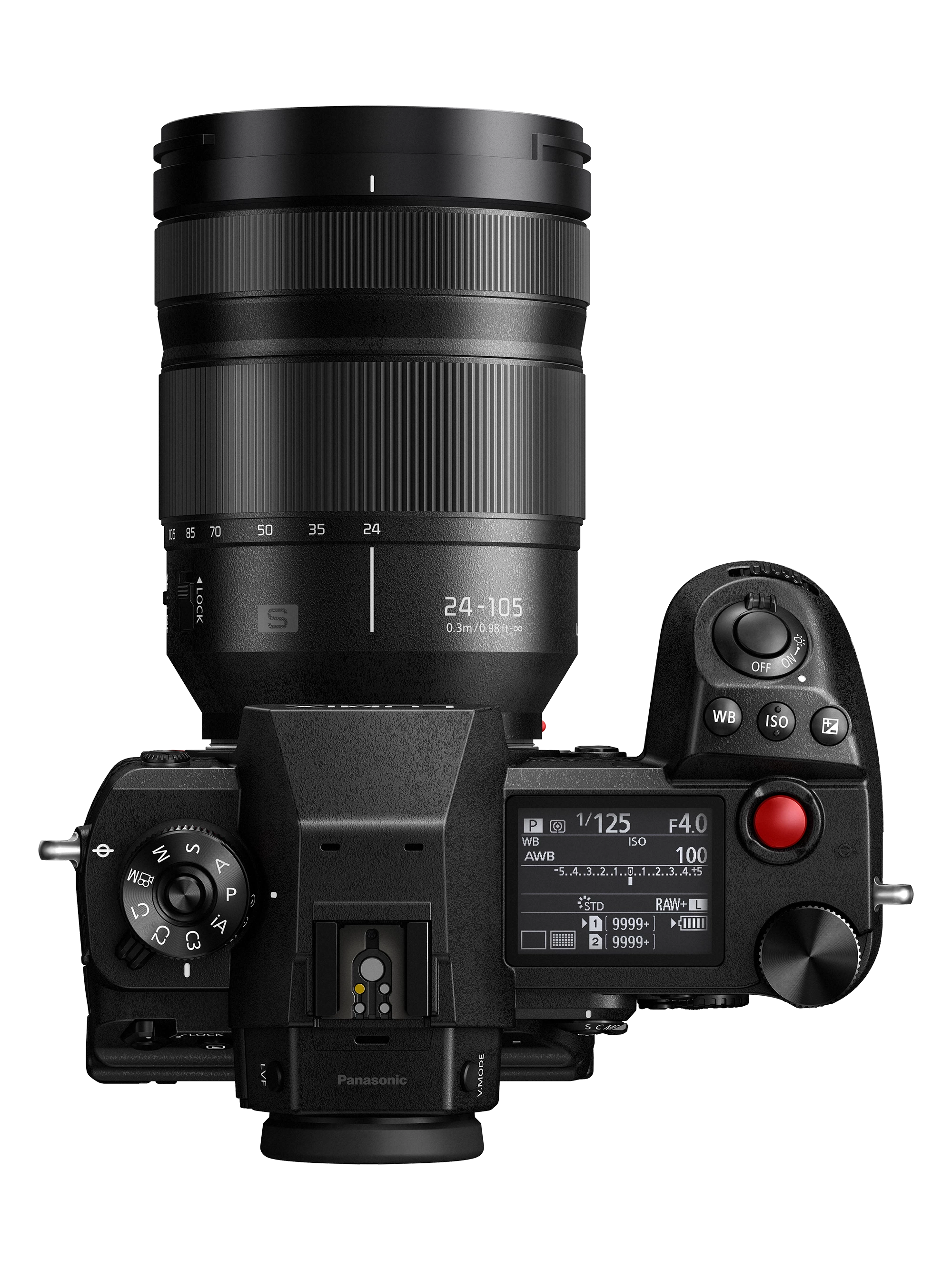You just knew it was coming. After augmenting its mirrorless lineup with the terrific S1 and S1R full-frame stills-focused cameras, Panasonic has now released an H version focused on video. Like a GH5 on some serious steroids, or a super-compact, hand-holdable Varicam, the S1H is a cinema-ready low-light beast that should put a chill up Sony's spine.
Launching in Hollywood right as we go live, the S1H uses a new 24.2-megapixel sensor, delivering an impressive 14 stops of dynamic range between the darkest shadow and brightest highight. Each pixel is connected to two different circuits, giving it dual native ISO capability like its professional-grade Varicam cousins. That means it's got two ISO baselines to work from – 640 and 4000 – and it makes the S1H an absolute weapon in poor lighting conditions.
In terms of top shooting resolutions, the S1H offers a monster 6K, 10-bit/24p full-frame 3:2 image, or it'll do a 16:9 image at 5.9K in 24/25/30p. All modes can record as long as your SD cards are deep, with no time restrictions.
Like the GH5, it offers both high frame rate (HFR) and variable frame rate (VFR) shooting. HFR shooting on the S1H goes up to a crazy 120 frames per second in 1080p, with full 10-bit color including sound and real-time autofocus, which means you can record slow-mo but retain both a seamless image and audio to use at real-time speed in the final edit if you like. VFR ditches sound and the bitrate drops off as you move up to its maximum of 180 frames per second, but it'll still be very useful.

In order to achieve the S1H's unlimited recording times in all modes, the magnesium alloy body needed to be redesigned to better expel heat than the S1 or S1R. Hence, it's a little bigger, chunkier and heavier, and features a built-in fan to draw air through the chassis. Not to worry; it's silent, you can feel but not see a tiny bit of vibration (thanks to Panasonic's extraordinary dual in-body/in-lens stabilization), and Panasonic says the venting doesn't compromise the camera's weatherproofing at all; it's still dust and splash proof and fully roadworthy for outdoor work.
The rear touchscreen is a great example of what a kitchen-sink production this camera is: Panasonic couldn't decide whether it was better to have a tilting screen, or a flip-out and rotate screen, so it gives you both, on a solid-feeling double hinge. And there are big red recording lights on the front and rear of the camera, to help both the cameraman and the talent be absolutely sure when it's rolling. And there's a giant LCD display on top of the camera to keep settings easily in view – it draws so little power that you can leave it on even when the camera's off.

To put the camera through its paces for the Aussie media launch, Panasonic Australia set up a range of studio shooting locations, from a low-lit study, to a fast-paced swing-dancing diner scene, to a dingily-lit live band shoot, to demonstrate just how flexible and fast the S1H is to work with across a range of different shooting locations.
The low-light study scene was shot at an ISO of 2,400, gained down from the higher native ISO of 4,000, and the assembled media were blown away by the image on screen even before we found out that the cinematographer was shooting with an ND filter on to darken the shot. It was also a chance to demonstrate another of the S1H's party tricks, the ability to pull between two set focus points at a rate of your choosing.
The swing-dancing scene allowed the camera's slow-mo capabilities to come to the fore, and showed off its capability to replicate slider and jib shots while hand-held and stabilized by the in-built gear.
And the final scene was one that'll be familiar to pretty much anyone who makes videos these days – a band, rocking out in a dingy bar. The lighting was patchy and low, but again the S1H's low light capacity pulled far more light out of the situation than the cinematographer needed, and again he had to fit an ND filter to darken the image enough to go wide open on the aperture. This was also an opportunity to demonstrate more stabilizer tech – there's a new IS Lock setting that made a 70 mm hand-held shot look like it was sitting on a tripod, even when the cameraman deliberately jiggled it. And if you want to go really bananas, you can add digital stabilization to the image as well.
As for autofocus, while it's a tool rarely used by anyone who'd call themselves a cinematographer, we had a chance to play with it and see how the S1H's system fared with a wide-open aperture and shallow depth of field. The results were mixed. It struggled to catch focus at slower frame rates, and seemed to have trouble deciding what to track. But when we enabled face detect while shooting at a faster 60 fps and disabled V-Log mode to give it more contrast to work with, it worked like a demonic focus puller as we moved the camera around, keeping our subject's eyes crystal clear. Work out how to tame it, and this is an autofocus system that can get you some pretty impossible shots.
In our limited look at the S1H, it was very clear: this is going to be a dream camera for small operations, flexible enough for just about any kind of work and beautifully set up to run and gun handheld if you don't want to rig it up or bring a tripod. Its features list and internal menus are insanely daunting, in keeping with its potential as a professional-standard cinema rig, and since the footage is pretty much indistinguishable from Varicam footage, it'll likely find its way into bigger production studios as well, as a compact option to stick on a drone or fly down a wire or run handheld... Or to use as a hyper-capable stills camera for behind the scenes shots – after all, it'll be every bit the stills machines that the S1 and S1R are.

Panasonic is hugely proud of this one. It's the company's love letter to filmmaking. Unlike Canon, Panasonic sees no downsides to having its mirrorless gear bleed over into the territory of its pro cinema offerings. It's everything that made the GH5 such a beast, but better in every way but two: it's a lot heavier, and it's more expensive. The body will be retailing for US$3,999.99 in the USA, and AU$5,999 in Australia.
It launches with a pair of new lenses – the Lumix S Pro 24-70mm f/2.8, and the Leica DG Summilux 25mm f/1.4, further expanding the large and growing range of native lenses Panasonic has built for its full-frame bodies. This company is serious about stamping its authority on the cinema world, and at a first glance, the S1H looks like an absolute belter.
Check out a video below.
Source: Panasonic



















